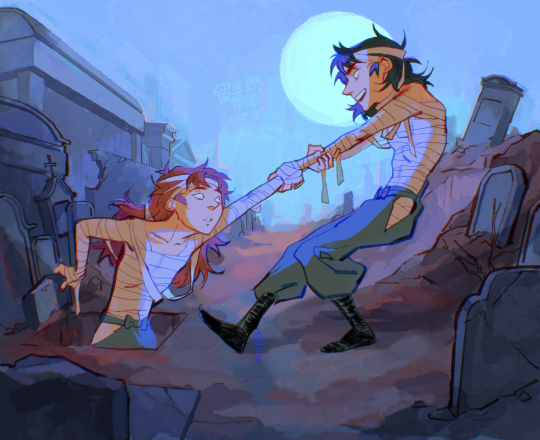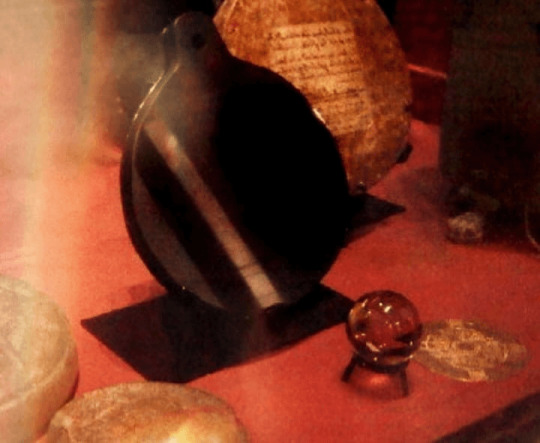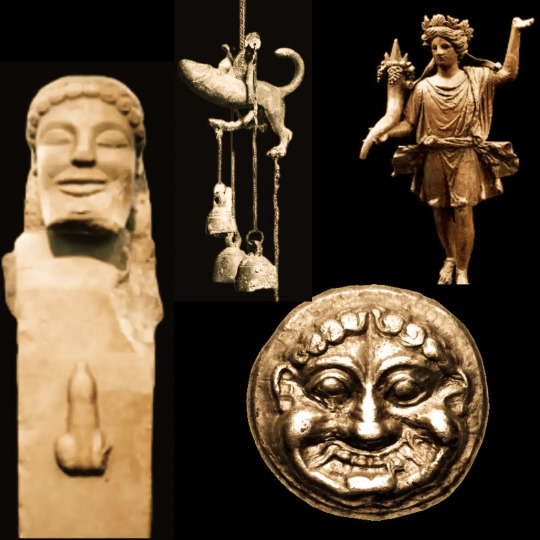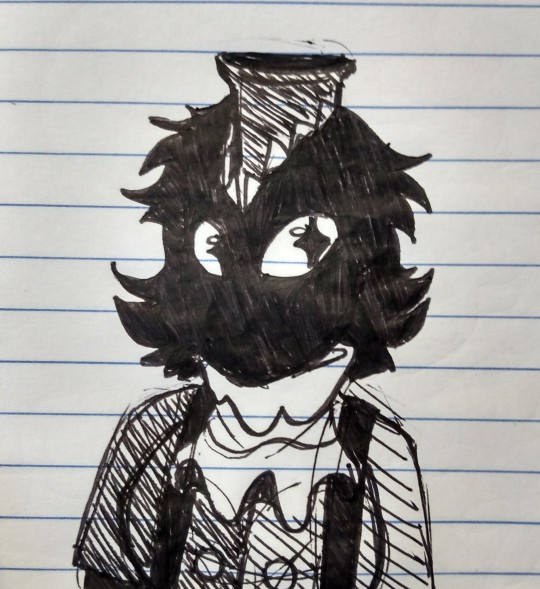#kemas
Explore tagged Tumblr posts
Text
Gay people, am I right?

#miku hatsune#hatsune miku#teto#teto kasane#kasane teto#teto utau#teto x miku#miku x teto#drawing#quickdrawing#i already did this with kema and north sky but idc i like the dynamic#synthesizer#lesbians#lesbian#vocaloid fanart
107 notes
·
View notes
Text




tomesaburou gekkans
#calarts got to me sorry king I failed u with the amount of content here 😭😭#nintama#quirinahdraws#digital#忍たま乱太郎#nintama rantarou#rkrn#so many ideas…so little time… stupid stupid stupid 😭#I PAINTED 😁😁😁😁😁 lowkey I had like a crazy fever by the end of the month and I couldn’t draw AT ALL#so when I did the first pass of colors for my last day one it turned out super rank and I had to revisit it bc my neuroses got to me#it’s tomesaburou pulling isaku out of the grave like it’s a pitfall!#once I get more time management skills we are SOOO back.#every month is tomesaburou month if you just try really hard though honestly#kema tomesaburou#nanamatsu koheita#tenki#doi hansuke#by technicality.#zenpouji isaku
51 notes
·
View notes
Text
Ancient Amulets and Talismans: The Magical Legacy of Protective and Prosperous Symbols
Exploring the Historical Significance and Modern Interpretations of Greek, Greco-Roman, and Celtic Amulets and Talismans in People Magical Practices and Cultural Beliefs
In recent times, amulets have once again become consumer items. I say "once again" because the sale of amulets spans thousands of years. However, unlike in previous centuries, they have lost their sacred character. Since people sometimes ask me for a "prosperity amulet"—having seen them for sale elsewhere—I believe it's an excellent opportunity to discuss the topic.


Left: Photo of Dr. John Dee's Black Obsidian Scrying Mirror on Display at the British Museum; Right: On the left, a marble herma with the head of Hermes and an erect phallus on the front of the pillar; above, a Roman tintinnabulum with a hybrid shape of an erect phallus and lion; below, a wappenmünzen with Medusa's effigy; to the right, a lar or Roman representation of the family spirit protector of the home holding a cornucopia.
Surprisingly, I agree with the definition of amulets, except for the "supernatural effects" attributed to them. We attribute certain powers or qualities to the natural world, and all objects from the natural world share the same symbolism, being associated with the culture we belong to and our personal and family beliefs.
In magical arts, there are two distinct types of these magical objects: amulets and talismans. To simplify, amulets are designed to ward off negativity, while talismans attract all kinds of fortunes. They are two sides of the same coin but are not the same. Ancient amulets require a broader explanation—I'll touch on that towards the end—but for practical purposes, the operative definition in the context of current magic is that amulets repel and talismans attract.
To acquire its power, this magical object requires four complementary actions:
Apotropaic: This is the most popular type and does not require formal magical knowledge. For example, a stone naturally holed by erosion. The powers considered are part of the culture, like believing in the protection of a St. Christopher medallion, which can have apotropaic qualities either inherently (animism) or by being "blessed" by a priest.
Liturgical: This involves sanctifying the object through religious rites, invoking the power of entities, gods, or spirits. An example is the aforementioned blessing of the St. Christopher medallion, where the priest acts as an intermediary and channel for the saint's power.
Energetic: Known as "charging" or "energizing," this action seeks to multiply the amulet's power. This does not necessarily involve a religious ritual. For example, leaving a stone exposed overnight to moonlight to "charge" it.
Sympathetic: This transfers the symbolic to reality through signs, words, the addition of objects, or spells. For example, engraving a talisman with the image of a desired book to attract that book, representing the desired object and making it appear in the material world.
Some details: If you buy an amulet because someone told you it's protective, you're trusting the seller's word, not the amulet's properties. If you value the seller's word—as some do with a priest—then you indeed have a powerful object. You can also buy a personalized amulet and "charge" it yourself, but you'd be purchasing the container of power, not the amulet itself. If you learned as a child that a horseshoe above the door brings good luck, then go ahead, because your subconscious likely considers that horseshoe very protective.
For millennia, writing was considered a magical art. The privileged classes guarded it zealously, believing that certain symbols possessed inherent magical powers. This tradition persists even in modern movies, where we see Count Dracula writhing in pain at the sight of a cross. This is the animistic theory of talismans’ operation, prevalent in popular and pagan witchcraft, both ancient and modern.
Today, many magicians reject this theory in favor of the energetic theory of talismans’ operation. They consider the most important thing is to charge the talisman or amulet, that is, to introduce magical energy into the chosen object to make it powerful. The time spent carefully drawing specific symbols on the object is an effective way to create and transmit energy. Adding this energy to the one generated and directed by the magician during the charging ritual explains why this magical technique is so powerful. However, no method—be it Witchcraft or Ritual Magick—is superior to another.
Stones for Making Amulets and Talismans
In historical families of the Celtic areas of the British Isles, the tradition of attributing powers to certain stones has a long history. The most famous of this legacy is the Lee Penny, belonging to the ancient Scottish family of Lockhart. This red stone, set in a silver coin, was believed to have powers to heal cattle: the magical technique involved immersing the stone in water and giving this water to the sick cattle. Sometimes, the distinguished family lent or rented the stone to others with cattle, representing a shared belief and magical practice by a community.
Astrological guardianship is crucial to determining the virtues of stones. Most modern lists of zodiac stones or "sign stones" are purely marketing; though beautiful, wearing the wrong stone has no significant magical effect unless you believe in it wholeheartedly (not the seller). However, some lists of stones and their astrological correspondences have ancient consolidation, like the one mentioned in the Bible about the High Priest of Israel's breastplate (Exodus 28:15-21). Historian Flavius Josephus says the stones on the breastplate symbolize the twelve months and the twelve zodiac signs, with the two large stones representing the Moon and the Sun. The current custom of wearing sign stones originated in the 16th century in Poland, among the Jewish jeweler guild interested in the breastplate's mysticism. Nonetheless, the astrological and planetary correspondences do not match the instructions for the stones we can buy today in the Jewish Quarter or any fair ( here you can read the History, magical uses, and spiritual meanings of precious and semi-precious stones).
Due to its color, one of the most magically charged stones is obsidian—less so, onyx—as it is believed to have trapped the very night. The magical mirror of Elizabethan astrologer Dr. John Dee, to whom we owe powerful Enochian magic, was made of polished obsidian.
If you're looking for a universal talisman or amulet but have a limited budget and do not trust the seller's knowledge, the mineral with which we can all symbolically associate attraction and repulsion is the old and beloved magnet. Magically, it is associated with attraction, but it can be used both to attract and repel, especially if combined with the symbolism of the metal it attracts, iron, representing Mars and Aries.
With the right moon, the right day, a spell written by you, and a good magnet, you will have a much more effective talisman than any piece bought in Villa Biarritz market.
Greek and Greco-Roman Amulets and Talismans
In ancient Greece, the most commonly used apotropaic symbols were the eye, the gorgoneion, and the genitals. These symbols were used in various ways. For example, some Greek kylikes were decorated with two large eyes so that when brought to the lips to drink, the face was completely covered by the cup: the person facing the drinker only saw, as if it were a mask, two intimidating fixed eyes. The eyes served as protection against critics and the evil eye, and also allowed the drinker to cast a glance at the guests, giving them the unsettling sensation of being constantly watched. The function of decorated kylikes was to give the illusion of control over one’s destiny and the destiny of others. To protect against enemy attacks and deceive death, the eye was also present in contexts like the Pyrrhic dance and in war weapons, generally represented on shields.
Apart from the eyes, the gorgoneion (or gorgonian) was also depicted on the shields of Athenian soldiers, as Perseus was a favorite of the goddess Athena. The gorgoneion is nothing more than the head of Medusa, the gorgon well-known for her ability to petrify anyone who dared to look into her eyes. Other attributes include the snakes for hair and the boar's tusks for teeth. A more recent interpretation of the myth shows empathy for Medusa because her head was severed by Perseus. However, unlike, for example, Ariadne, Medusa is not a mythical woman but a terrible monster, the embodiment of Death before whom we are all defenseless. (If you want to know my stance on the reinterpretation of myths, you can read the entry about Lilith)
Finally, the erect phallus was present in many iconographic contexts. Depending on the scenes, phallic representations could be simple erotic decorations, symbols of apotropaic objects, or serve to attract fertility and fecundity, similar to the cornucopia or horn of plenty. For instance, some scenes with an erect phallus were placed at crossroads and property boundaries; along with the phallus, a rudimentary bust was generally sculpted in stone. This stone was called herma, originally representing the god Hermes, protector of travelers and merchants, psychopomp and lord of the roads. Sometimes, this hermetic pillar was depicted in skyphos along with the caduceus, also an attribute of Hermes. Other examples include kantharoi with representations of satyrs with an erect phallus, illuminating maenads who carry the thyrsus in the retinue of Dionysus.
In Roman times, the preferred object to ward off evil influences was a kind of rattle usually placed on the doors and thresholds of houses. One of the most beautiful examples was found in Pompeii and features five phalli arranged like horns. Astragali and protective hand figures were also popular, as were the gorgoneion and cornucopias—whose origin lies in the goat Amalthea who nursed Zeus—as an attribute of the goddess Fortuna. Mercury's tintinnabula, which had the apotropaic function granted by the phallic rays emanating from the god's head, were also fashionable. This type of tintinnabulum is fascinating because it simultaneously served to protect and attract luck and fortune with the bag of coins Mercury held in his hand.
Tarot by Kema
Montevideo
#uruguay#montevideo#witchcraft#pagan#witches of tumblr#magick#wicca#hellenic polytheism#hellenic pagan#hellenic deities#amulets#talismans#kabbalah#astrology#witchblr#tarot por kema#paganismo#witchy aesthetic
33 notes
·
View notes
Text







20 notes
·
View notes
Text
More at work doodles. At least it helps past time





#incredibox#incredibox fanart#incredibox express#express#incredibox sepbox#sepbox#Lucidbox#my art#traditional art#oc tip#oc Kema#(Reds oc hehehe)#oc leon
71 notes
·
View notes
Text
Milkshake mansion girlsss cause I love making them soooo much~!! >w< <,33!!






The design choices here are sooo limited here (but I love the style soo much!!) so I have to edit some of them in ibis paint but I'm not really that good at the app so sorry if it looks a bit weird.. Hope you guys still like it though!! :,33
Next up,, The boiss~!!!!
~~~~
Tsutsuji (The brown hair) and Yoake (the light blue hair) belongs to @n0vatsu ! Talissa (the redhed) and Juliet (the vampire) belong to @gachaclubideas ! Star (the purple hair) belongs to @startheimpactfangirl ! Kema Umi (The blonde hair) belongs to @alcohol1maid !
And the milkshake mansion belongs to @boiling-potato !
#oc#not my oc#for mutuals#mutuals#picrew#mm! yoake#mm! tsutsuji#mm! juliet#mm! talissa#mm! star#mm! kema umi#milkshake mansion#milkshake oc#milkshake house#milkshake house characters#milkshake mansion au
21 notes
·
View notes
Text
"You're a loser baby~"
"A loser but just maybe if we-"
"Eat shit together, things will end up differently~"

Ok-
I know @justafriendlystranger suggested that this song was for sweet carnage and don't get me wrong! I really like the idea! But I'd like to imagine Trickster having husker's role more in the song than angel dust and since meztli don't like being insulted, I figured this song fits sweetened chaos more and I just also really like the idea of them in the song!! (≧w≦)💕💕❤️❤️💖💖‼️‼️✨✨
---
Kema Umi belongs to @alcohol1maid !
And Trickster belongs to me!
#boiling potato#oc#my oc#my oc Trickster#Trickster#not my oc#friend's oc#mutuals#coffee ☕💕✨#kema Umi#ship#oc x oc#Kema Umi x Trickster#sweetened chaos#art#my art#digital art#oc art#ship art#fanart#loser baby#hazbin hotel#husk#angel dust
51 notes
·
View notes
Text




Episode 24-10 忍者食の謎をさぐれ!の段
#nintama#nintama rantarou#gifset#kema tomesaburou#yamamura kisanta#fukutomi shinbei#tomatsu sakubei#shimosakabe heita
7 notes
·
View notes
Text




【Coupling Column】Vol.70 Failure Ninja Rantarou
#Fuwa Raizou#Hachiya Saburou#Kukuchi Heisuke#Takeya Hachizaemon#Zenpouji Isaku#Kema Tomesaburou#nintama rantarou#Failure Ninja Rantarou
10 notes
·
View notes
Text



6th years. The recent movie shed new light on their personalities and their relationship with one another, and I am forever grateful 💚
#nintama#nintama rantarou#rkrn#6th grade#drawing#digital art#zenpoji isaku#kema tomesaburo#shioe monjiro#tachibana senzo#nanamatsu koheita#nakazaike chouji#六年生#忍たま乱太郎#忍たま#軍師の六年生尊すぎました…ッ
4 notes
·
View notes
Text
Johnathaniel Madden, formerly Johnathaniel Maddornest and codenamed third sleep Princess, was the Marchioness Kolgar, white with fear, to Kema Inebbe, visibly shaking; from the furrowed, angry BROW of Allarat to the statue-like stare of Burgess.
#TEXT#DAY 0#From the marchioness Kolgar#white with fear#to Kema Inebbe#visibly shaking; from the furrowed#ANGRY brow of Allarat to the statue-like stare of Burgess.
3 notes
·
View notes
Text


Sketch dump thing
#original character#oc#kema umi#hatsune miku#vocaloid#artists on tumblr#small artist#art#sketch book#sketch
20 notes
·
View notes
Text





my files are kind of a nightmare
#I’ve been mostly doing one-offs but I WILL wrangle these into coherent pages (insane)#忍たま乱太郎#Nintama rantarou#nintama#digital#sketchdump#rkrn#quirinahdraws#one of my moots was having a joker moment bc they kept hearing people say they liked a rare pair they’re super into#and then they try to look for content of it and no dice. YEAH#こへ仙#ayataki#滝綾#MY TAGS ARE ALSO A MESS WOW. um…#nanamatsu koheita#tachibana senzou#nakazaike chouji#shioe monjirou#kema tomesaburou#doi hansuke#I like imagining him and tenki having a shoulder angel shoulder devil bit#mermaid au#genderbend#WHOS HYPE FOR MOVIE IM HYPE FOR MOVIE!!! the blood is my Roman empire though#EVERY TIME NEW PROMO ART GETS POSTED I GET MORE SCARED. IM REALLY EXCITED
75 notes
·
View notes
Text
The ancient art of fine cooking
A Culinary Journey Through Ancient Cultures
“If you’re twenty-two, physically fit, hungry to learn and be better, I urge you to travel – as far and as widely as possible. Sleep on floors if you have to. Find out how other people live and eat and cook. Learn from them – wherever you go.”
₊⊹ Anthony Bourdain, 1956 – 2018 ⊹ ₊
The oldest known cookbook—written in cuneiform script—dates back approximately four thousand years and hails from ancient Mesopotamia. A few decades ago, Assyriologist Jean Bottéro delved into the study of ancient cuisine, rediscovering the Yale Culinary Tablets. His work sheds light on the Mesopotamian world and presents forty dishes that contribute to the cultural phenomenon we call gastronomy. (The book is titled The Oldest Cuisine in the World and is available on Amazon.) If you're pondering wine pairings, I should mention that these ancient peoples were beer enthusiasts.
In Greek civilization, recipes are often found within theatrical works, mostly comedies. From Magna Graecia, Alexis of Thurii instructs us in the art of preparing mackerel:
“After removing the gills and cutting around the bones, make a proper cut and open it up completely, filling it with silphium, cheese, salt, and oregano.”
Mackerel is a blue saltwater fish; silphium, a now-extinct plant, produced a potent resin, suggesting we should substitute something similar—perhaps garlic—to approximate the flavor; the cheese used is goat cheese. The dish can be either baked or grilled, and considering the method, the cheese should be soft.
However, purists always have their say. In Hedypatheia, Archestratus of Gela, the first traveler to link food and culture, advises:
“(...) not too much oregano, no cheese, and none of the nonsense.”
Archestratus recommends coating the fish with olive oil and adding a splash of vinegar at the end of cooking. Among the Romans, the illustrious Marcus Gavius Apicius, who can rightly be called the first gastronomist, bequeathed De re coquinaria. Seneca marveled at the delicious creativity of this cookbook, which compiled both popular dishes and Marcus’ own creations ( that we now know under the ostentatious term 'signature cuisine') Particularly renowned are his recipes for lamb and trout stuffed with dried figs.
I can't speak for the trout, but I can certainly vouch for the lamb.
Here’s a version of the recipe for Libum, an Ancient Roman kind of cheesecake:

Libum was originally a sacrificial cake offered to the lares ( I don´t know if there is a word in english: " lares" are household gods) This recipe comes from Marcus Porcius Cato's De Agri Cultura.
Ingredients
1/2 cup plain all-purpose flour
1 cup ricotta cheese
1 egg, beaten
Bay leaves
1/2 cup clear honey
Instructions
Sift the flour into a mixing bowl.
Beat the cheese until smooth, then stir it into the flour.
Add the beaten egg to the flour and cheese mixture, creating a soft dough.
Divide the dough into four portions and shape each one into a bun.
Place the buns on a greased baking tray with a fresh bay leaf underneath each.
Preheat the oven to 375°F (190°C). Bake for 35 to 40 minutes, until the buns are golden brown.
Warm the honey and pour it onto a flat plate. Place the buns on the plate to rest until the honey is absorbed.
#uruguay#montevideo#kitchen witch#kitchen witchcraft#pagan#tarot por kema#witches of tumblr#cooking#kitchen witchery#pagan witch#botica croi#magick#wicca
12 notes
·
View notes
Text




5 notes
·
View notes
